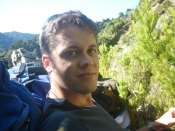Guerrilla History
I have just returned from a major biennial social sciences conference for teachers that was held in the central North Island town of Hamilton. At the conference a friend of mine presented on a topic that I think history teachers can learn a lot from: guerrilla geography.
I have very little formal training in geography but am convinced that the discipline has a lot to offer history teachers. Guerrilla geography, according to David Raven-Ellison, is about "daring people to challenge preconceptions about places; engage in social and environmental justice; and form deeper, more active community connections".
This is a statement that deeply resonates with my theory and philosophy of history education. My working definition of guerrilla history is "subverting or altering public spaces to draw attention to the past and its relationship to the present".
Some of my history teaching has instinctively led to actions with students that come close to fulfilling this definition, such as my historical sound walks project (see blog entry). It would come even closer if I got students to put posters or chalk messages at the site, directing Wellingtonians to their online work. I recently had students make historical graffiti with chalk on the pavement challenging the significance of November 5th in New Zealand history (see blog entry). Our staff car parks each have a number at the front. I once asked students to turn the two digit number into a year of their choice. For example, with a piece of chalk, car park number 17 became 1917. The students then made flyers to go under the windscreen wipers with a statement about why the year the teacher parked in is historically significant. All teachers got a short history lesson that day after school.
Next year I will work with my students to make a temporary memorial to the 1994 genocide in Rwanda. This will be placed in the school foyer on April 6, exactly 20 years since the start of that genocide (see blog). If guerrilla geography is anything to go by, there must be hundreds of opportunities for guerrilla history. Have you got any ideas?


